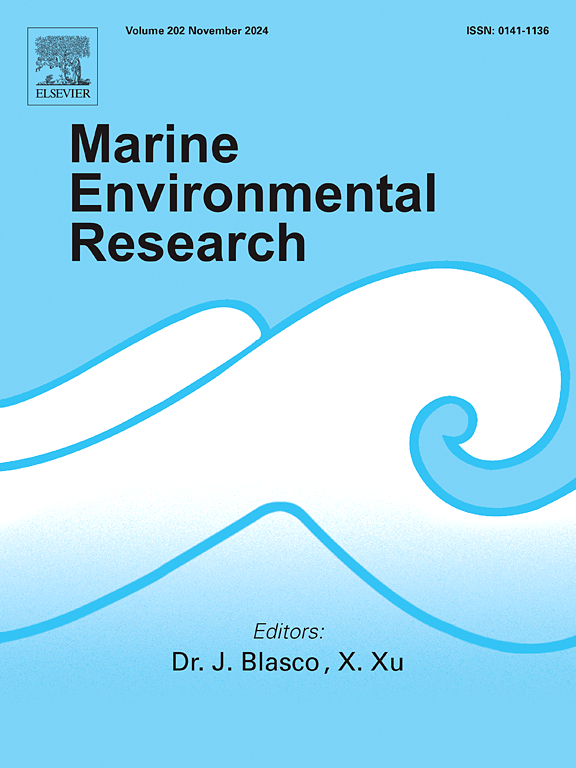Tidal modulation of benthic oxygen fluxes in a suspended mussel aquaculture
IF 3
3区 环境科学与生态学
Q2 ENVIRONMENTAL SCIENCES
引用次数: 0
Abstract
Benthic oxygen uptake in coastal mussel farms is enhanced by organic bio-deposition and can trigger hypoxic or anoxic conditions. Despite this, previous studies have determined benthic oxygen uptake under simulated conditions using traditional flux methods, overlooking the dynamic nature of coastal regions that can affect oxygen exchanges with processes occurring on different time scales. In this study, tidal variability of benthic oxygen fluxes in a mussel farm was examined using the aquatic eddy covariance (AEC) technique. Four deployments were conducted during neap and spring tides in the Ría de Vigo (NW Spain). Two AEC systems were concurrently deployed, one on each side of a mussel raft to measure benthic oxygen fluxes during tidal ebbs and floods. During neap tides, significantly higher oxygen flux was observed during floods (mean ± SD = −64 ± 34 mmol m−2 d−1) than ebbs (−42 ± 25 mmol m−2 d−1). This was due to higher velocities and associated shear stress. Conversely, during spring tides, oxygen fluxes were significantly higher during ebbs (−67 ± 34 mmol m−2 d−1) than floods (−51 ± 29 mmol m−2 d−1) despite higher velocities for floods. We suggest that this might be due to spatial differences in the shear stress, and possibly in resuspension, caused by bottom roughness variations. These differences in bottom roughness with tidal current direction is associated to the inhomogeneous distribution of mussel shells below the rafts. Measurements showed that the magnitude and direction of tidal currents modulated benthic oxygen fluxes by resuspending organic-rich sediments in shallow coastal ecosystems. Our results indicated that tidal driven resuspension enhanced oxygen consumption, and suggest that future mussel farms should be placed in deeper marine environments where this effect is reduced.
求助全文
约1分钟内获得全文
求助全文
来源期刊

Marine environmental research
环境科学-毒理学
CiteScore
5.90
自引率
3.00%
发文量
217
审稿时长
46 days
期刊介绍:
Marine Environmental Research publishes original research papers on chemical, physical, and biological interactions in the oceans and coastal waters. The journal serves as a forum for new information on biology, chemistry, and toxicology and syntheses that advance understanding of marine environmental processes.
Submission of multidisciplinary studies is encouraged. Studies that utilize experimental approaches to clarify the roles of anthropogenic and natural causes of changes in marine ecosystems are especially welcome, as are those studies that represent new developments of a theoretical or conceptual aspect of marine science. All papers published in this journal are reviewed by qualified peers prior to acceptance and publication. Examples of topics considered to be appropriate for the journal include, but are not limited to, the following:
– The extent, persistence, and consequences of change and the recovery from such change in natural marine systems
– The biochemical, physiological, and ecological consequences of contaminants to marine organisms and ecosystems
– The biogeochemistry of naturally occurring and anthropogenic substances
– Models that describe and predict the above processes
– Monitoring studies, to the extent that their results provide new information on functional processes
– Methodological papers describing improved quantitative techniques for the marine sciences.
 求助内容:
求助内容: 应助结果提醒方式:
应助结果提醒方式:


